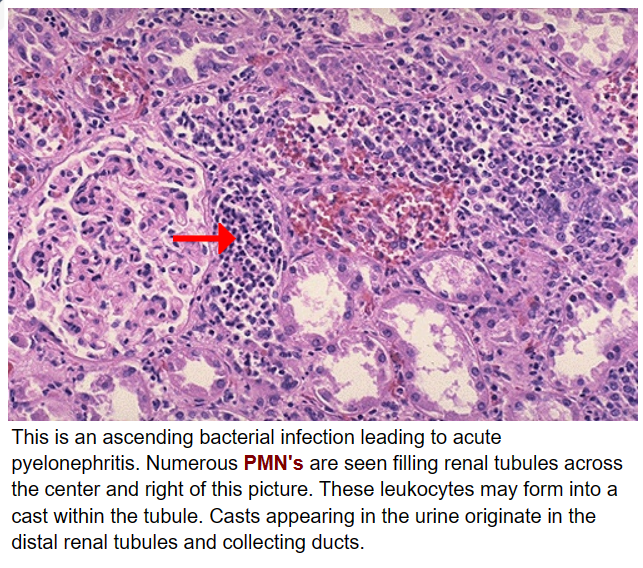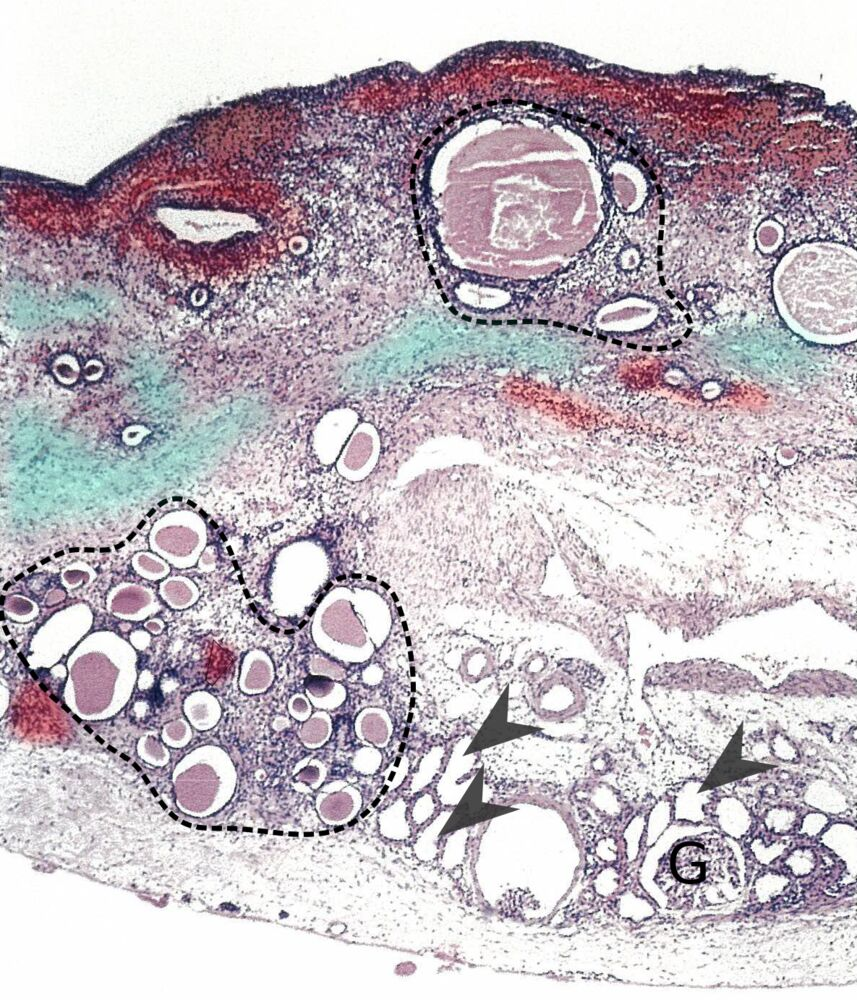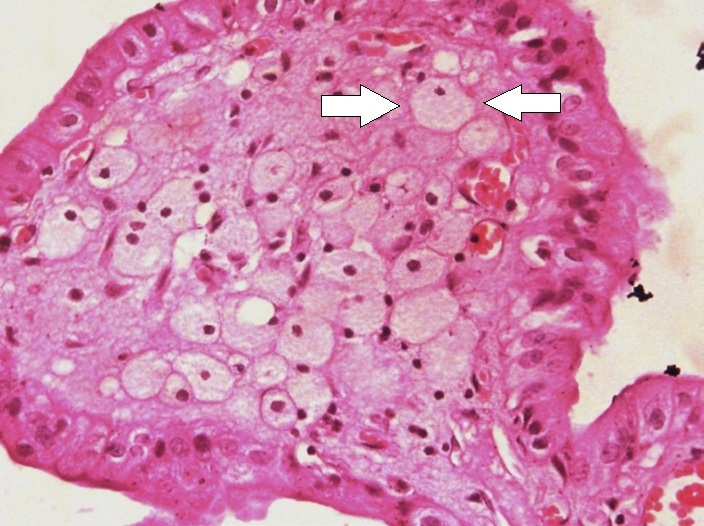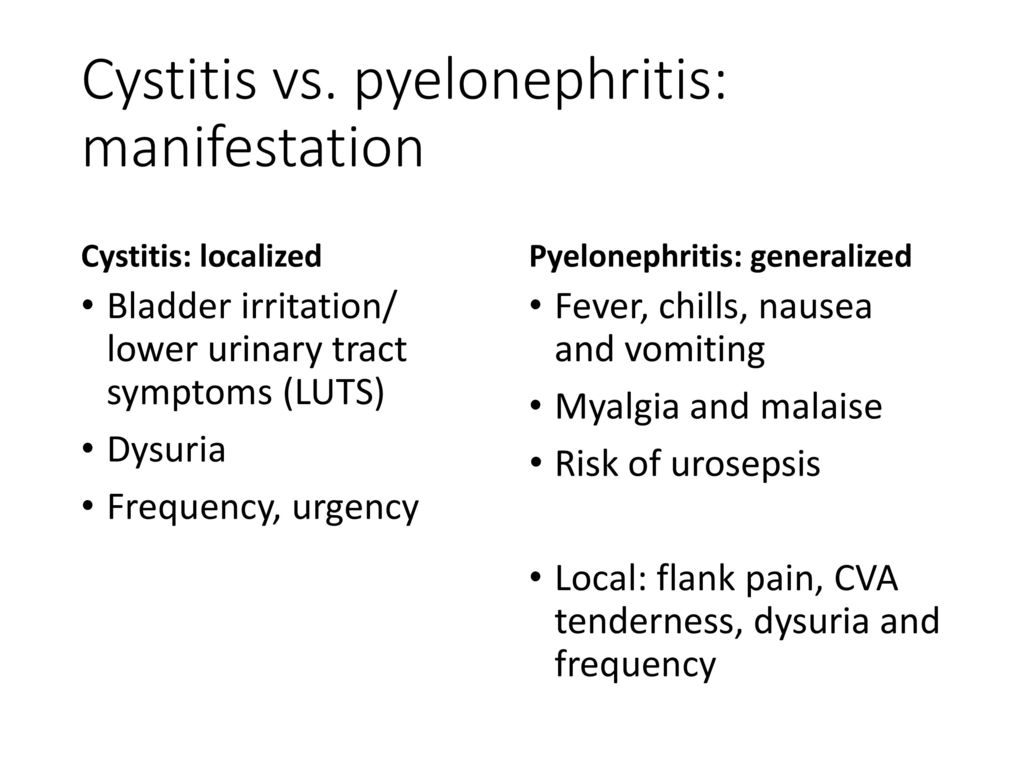Neutrophils infiltrate renal interstitium. Affects cortex with relative sparing of glomeruli/vessels.
Etiology
- Usually caused by an ascending bacterial infection of the bladder (cystitis)
- Pathogens
- Gram-negative rods bacteria (Thus use fluoroquinolones)
- Escherichia coli (∼ 75–90% of cases; leading cause of pyelonephritis)
- UPEC (uropathogenic E. coli)
- Virulence factor: P fimbria (pyelonephritis‑associated pili): specifically bind to the urogenital epithelium → cystitis, pyelonephritis
- Pseudomonas aeruginosa
- Klebsiella pneumoniae
- Escherichia coli (∼ 75–90% of cases; leading cause of pyelonephritis)
- Risk factors
- Most common in women because they have shorter urethras
- Pregnancy
- Urinary tract obstruction (potentially leading to pyonephrosis)
- Foreign bodies (e.g., indwelling urinary catheters or other urologic instrumentation)
- Anatomical abnormalities (e.g., benign prostatic hyperplasia, vesicoureteral reflux, nephrolithiasis, ureteral strictures)
- Immunosuppression (e.g., HIV, diabetes mellitus)
- Gram-negative rods bacteria (Thus use fluoroquinolones)
Pathology
Acute pyelonephritis
- Most commonly affects the cortex (spares glomeruli and vessels)
- Purulent inflammation of the interstitium with destruction of the parenchyma, the renal tubules, and, in some cases, the renal pelvis
- Histology
- PMN infiltration of the renal tubules and the interstitium

- Sparing of the glomeruli and intrarenal vessels
- PMN infiltration of the renal tubules and the interstitium
Chronic pyelonephritis
- Chronic inflammatory changes with rough, asymmetric scarring and fibrosis of the corticomedullary junction
- Blunted calyces from recurrent urinary reflux t
- Histology: eosinophilic casts in the tubules that resemble thyroid tissue with coloid (thyroidization of the kidney)

- Xanthogranulomatous pyelonephritis
- A rare form of chronic pyelonephritis characterized by chronic destructive granuloma formation
- Associated with Proteus mirabilis and Escherichia coli infections
- Large, irregular, yellow-orange masses on gross examination of the kidney (may be mistaken for a true renal neoplasm)
- Histology: granulomatous tissue with lipid-laden foamy macrophages and multinucleated giant cells

Clinical features
Tip
Suspect pyelonephritis in any patient presenting with fevers, chills, and flank pain, irrespective of lower urinary tract symptoms.
Diagnostics
Urinalysis
- Nonspecific findings of UTI
- Pyuria (positive esterase on dipstick test)
- Leukocyturia (WBCs > 5/hpf)
- Bacteriuria
- Positive nitrites on dipstick test indicate bacteria that convert nitrates to nitrites (most commonly gram-negative bacteria; e.g., E.coli).
- Hematuria (including microhematuria)
- Other findings
- WBC casts: rare finding, but considered to be a strong indicator for pyelonephritis
Differential diagnosis
Pyelonephritis vs Cystitis